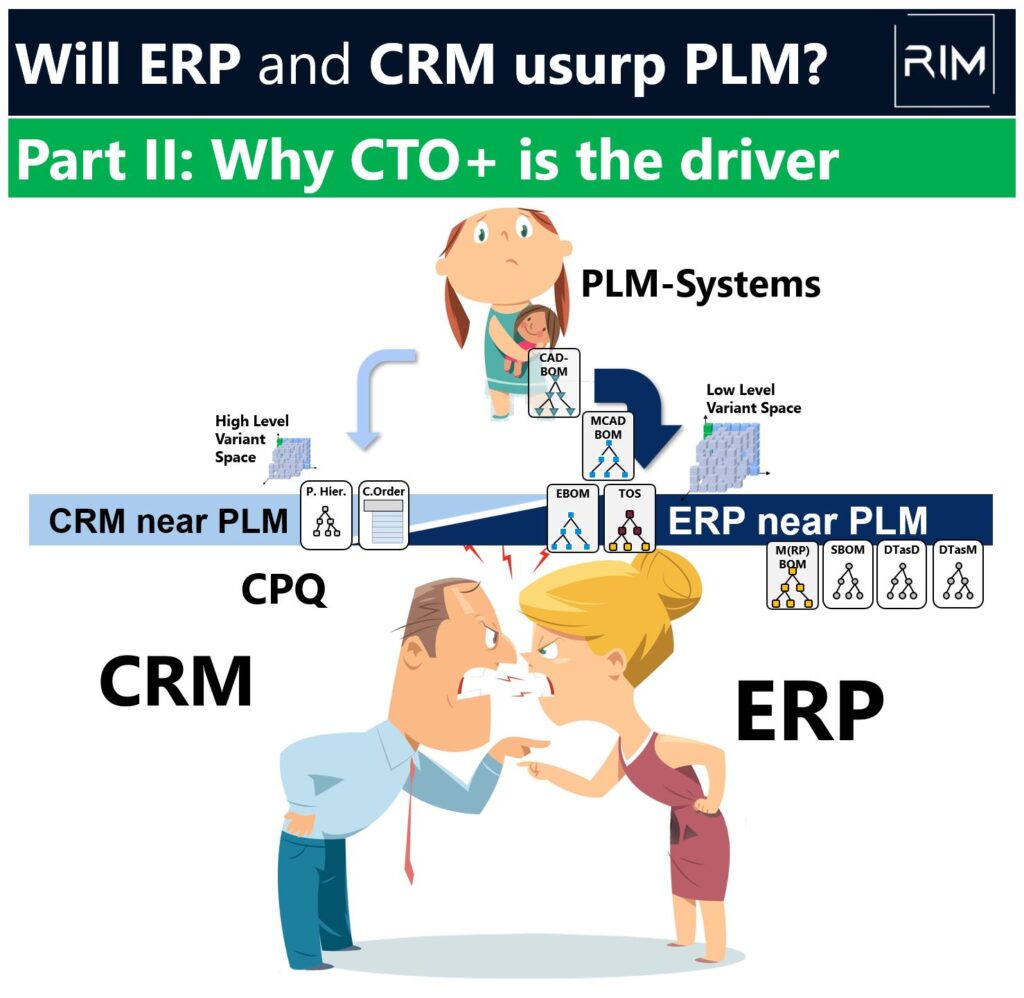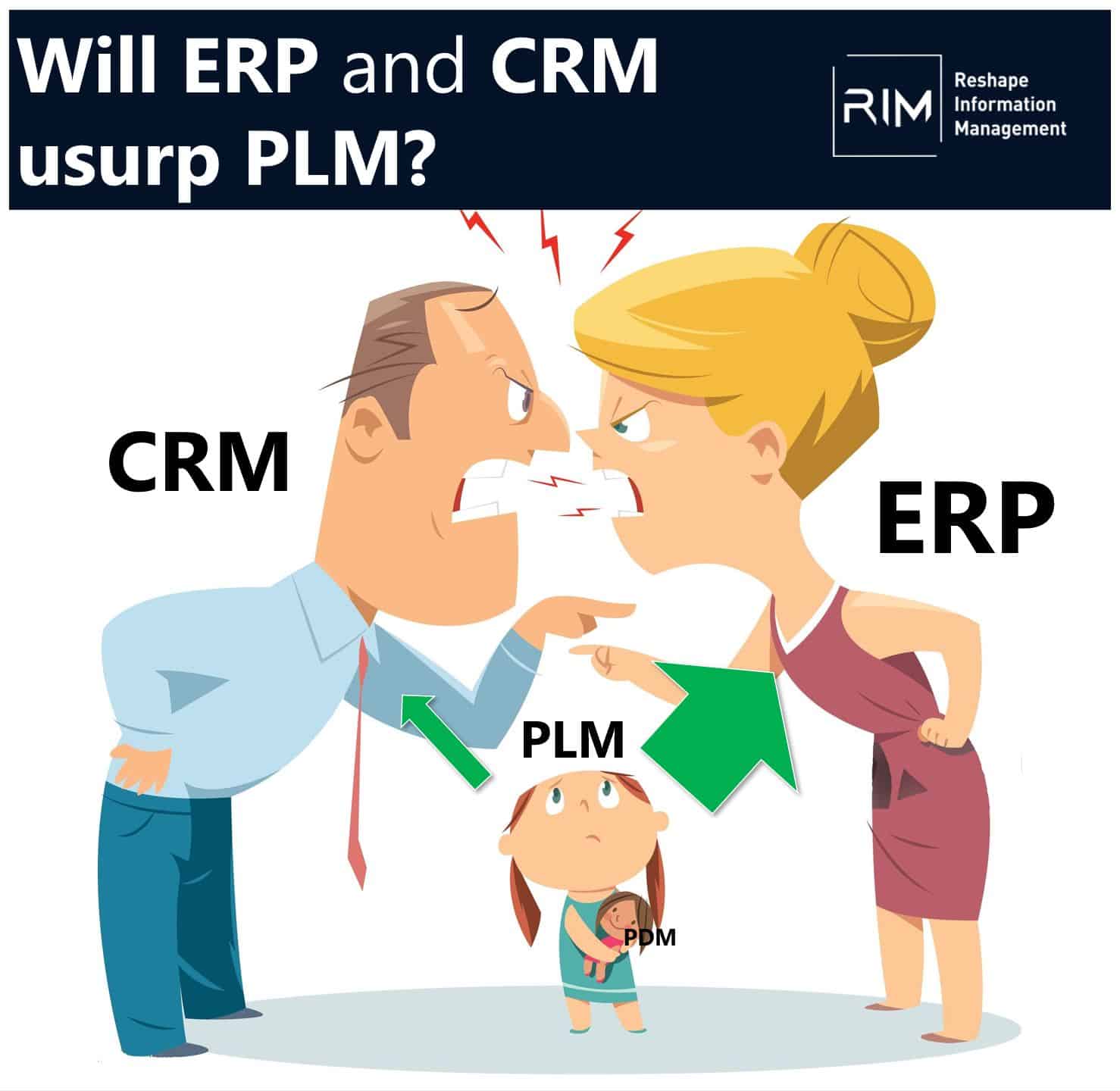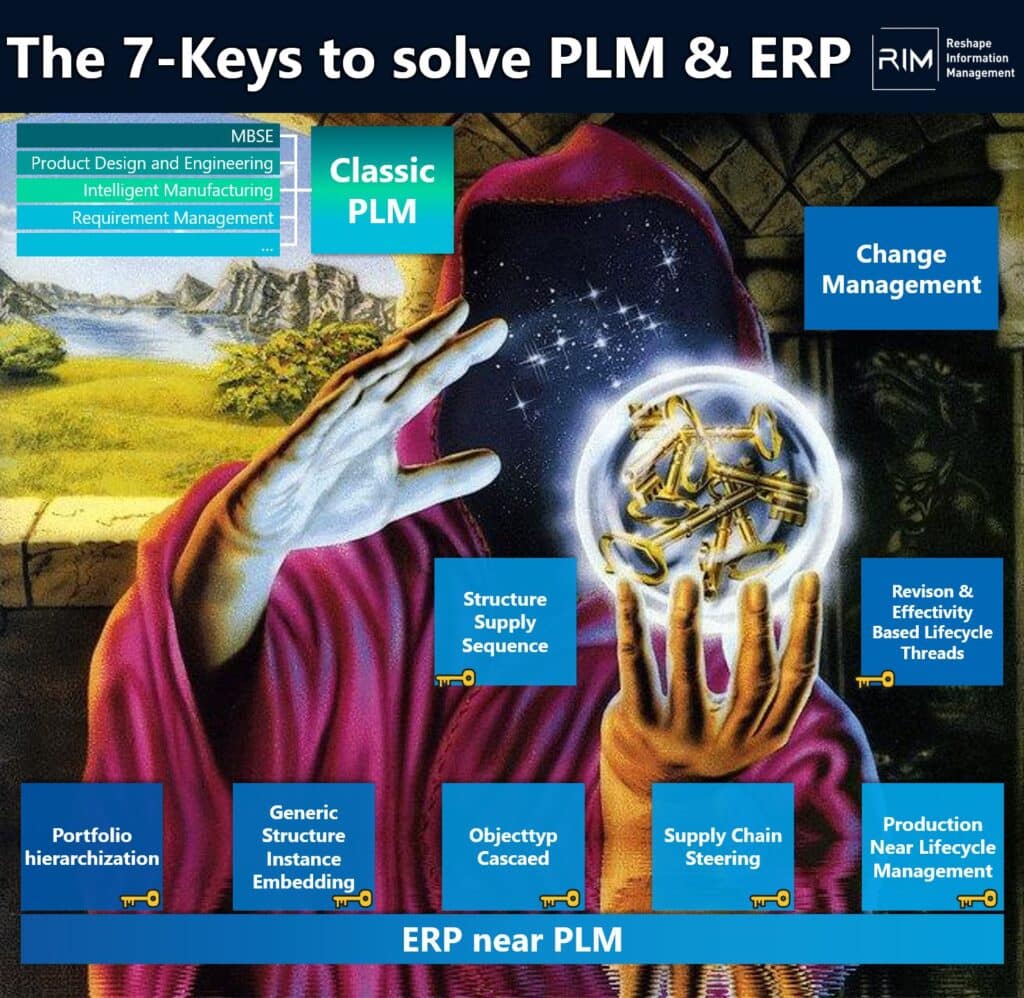LinkedIn post 1
Will ERP and CRM usurp PLM? We are facing the future.
I believe that ERP and CRM will take over parts of what we know today as PLM in the future. It feels strange to write that. A few months ago, I would have thought it was nonsense.
Now, how do I get there?
With the announcement of the cooperation between Siemens Digital Industries Software and SAP In the area of PLM, I have been working intensively on the PLM/ERP coupling. At the beginning, we discussed the concept of "part in PLM equals material in ERP" in industry discussions. The supply chain-related departments increasingly came up with cases where this was not correct. This led me to the ERP-related PLM on the trail. In other words, a range of topics that can only be sensibly solved with ERP.
Strategic discussions with top management also increasingly brought up the case of CTO+ in combination with topics such as fragile supply chains (resilience), production in the plant network and sustainability.
If we analyze this group of topics in more detail, it becomes clear that the ability to flexibly manage the supply chain is increasingly influenced directly by the design chain due to the plus component in CTO+. Product development will therefore have to be aligned much closer to the supply chain and therefore closer to ERP in the future!
It is also currently becoming clear that more and more "PLM" functionality is also accumulating in the CRM/CPQ domains. Some CPQ systems already offer functionality for low-level configuration in addition to the classic high-level configuration, and in more and more CRM implementations, quotation creation is moving into CRM. As a result, the classic sales items, i.e. "materials" that are delivered as product scopes, are changing towards sales-related semantics that include a functional sales aspect. The modular kits must then be increasingly subordinated to this. The shift to CTO+ also means that more and more product requirements are coming directly from sales.
Well, if you look at the market, you can already see this, albeit largely unnoticed. I recently had the opportunity to talk to Propel Software to talk about. A cloud PLM system, implemented on the Salesforce technology platform, largely financed by Salesforce and with a sales-oriented PLM approach.
The topic of ERP-related PLM is also already present at SAP (both in the private and public cloud), and there are already a number of exciting and implementable solutions.
I think this is also urgently needed!
If it crystallizes even roughly as explained here, then we will see the real battle for market share between Salesforce and SAP in the future, as we have already seen with CRM and ERP, and now also with CRM and ERP-related PLM.
As you can see, it is more urgent than ever for SAP to focus strategically on the ERP-related PLM aspects of its own range of services.
These are certainly bold theses that I am putting forward. I am therefore very keen to hear your perspective on this and look forward to your comments.
#ERP #CRM #PLM #Innovation #DigitalTransformation #SupplyChain #Sustainability #SAP #Siemens #Salesforce #Technology #FutureTrends #StrategicManagement

LinkedIn post 2
Will ERP and CRM usurp PLM? - Part II: Why CTO+ is the driver.
I believe that with the implementation of the CTO+ process model, large parts of what we currently locate in PLM will be transferred to CRM and ERP.
The key to this view lies in CTO+ and the approach we call the hybrid modular system. By hybrid modular system, we mean a modular system that is already largely industrialized and designed for a supply chain in a plant network. Such a hybrid modular system, i.e. one that is already fully industrialized for the most part, differs fundamentally from today's much-discussed approach, which is based on a pure engineering modular system in PLM that then has to be industrialized at great expense when an order is placed.
The hybrid toolkit is a further development of the engineering toolkits that are often available today. It is designed for distributed production in a plant network and can handle local content, local customization and operational make or buy, among other things.
Implementing the hybrid modular system means that some structures that are often located in PLM systems today will be found in ERP or CRM/CPQ or in CRM or ERP-related PLM in the future.
Specifically, this concerns the EBOM, Technical Order Structure (TOS), M(RP)-BOM and the digital twins. The configuration is then also carried out close to the ERP in the order case, so that the variant space is also assigned in the ERP or in the ERP-related PLM.
PLM topics that can be localized close to CRM or CPQ in the future are, for example, the hierarchies above the products as well as the development of the product architecture and the product modules. In the CTO+ case, product requirements increasingly come directly from the market and are then converted into functional features. It would therefore stand to reason that these aspects would also find their way directly from Sales into the CPQ/CRM systems and be supplied from there via future CRM-related PLM functionality. Today, customers often have functional, structured product structures (EBOMs, CAD-BOM EBOM mixtures) that are characterized by the quote position structure in CRM.
So what is left for traditional PLM systems? Well, what they have always done: Integrating CAx applications and supporting the order-independent PLM process. This area is much larger than we think today, and many issues there remain unresolved.
So the question really is whether it would not be more appropriate for PLM vendors to improve in their traditional areas rather than attempting to penetrate the digital supply chain with inadequate data models, as is the case today.
Well, hard stuff. You can also see it differently. I'm looking forward to your comments.
And if you want to implement your CTO+ with a hybrid kit and need help, please get in touch with us today 👉 STZ-RIM




